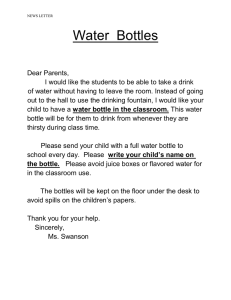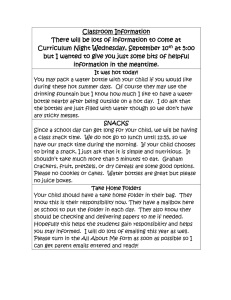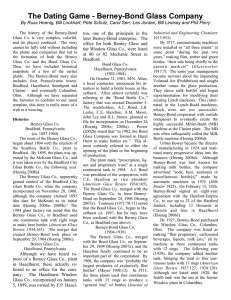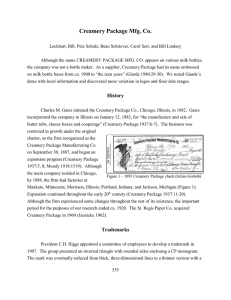normalmilkkey.doc
advertisement
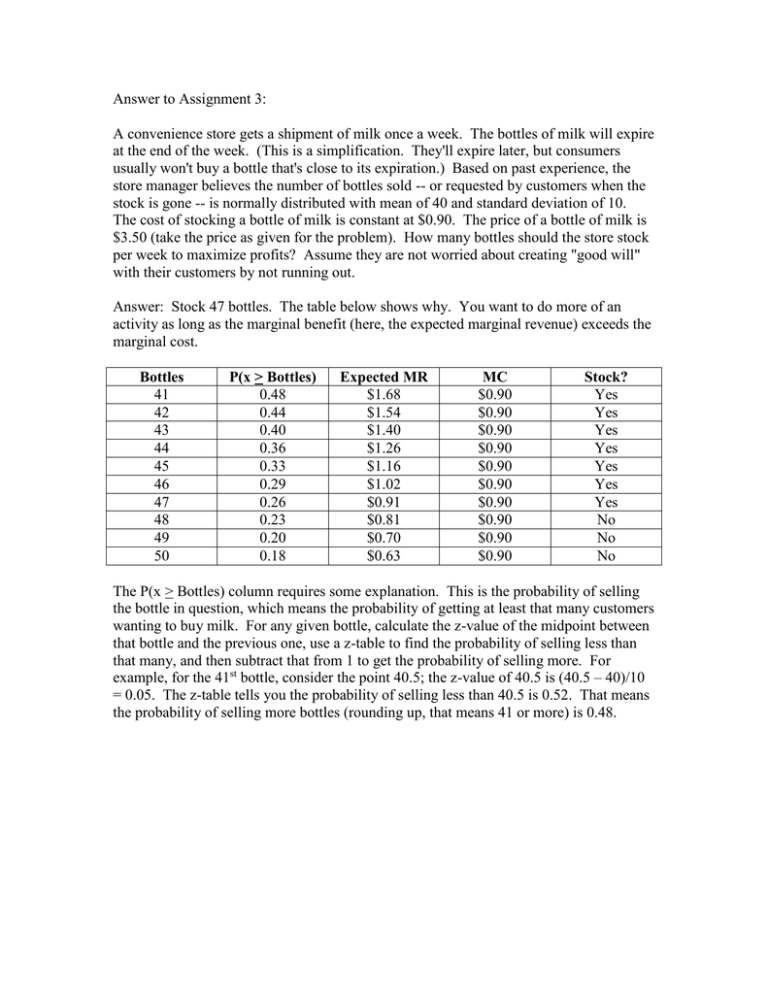
Answer to Assignment 3: A convenience store gets a shipment of milk once a week. The bottles of milk will expire at the end of the week. (This is a simplification. They'll expire later, but consumers usually won't buy a bottle that's close to its expiration.) Based on past experience, the store manager believes the number of bottles sold -- or requested by customers when the stock is gone -- is normally distributed with mean of 40 and standard deviation of 10. The cost of stocking a bottle of milk is constant at $0.90. The price of a bottle of milk is $3.50 (take the price as given for the problem). How many bottles should the store stock per week to maximize profits? Assume they are not worried about creating "good will" with their customers by not running out. Answer: Stock 47 bottles. The table below shows why. You want to do more of an activity as long as the marginal benefit (here, the expected marginal revenue) exceeds the marginal cost. Bottles 41 42 43 44 45 46 47 48 49 50 P(x > Bottles) 0.48 0.44 0.40 0.36 0.33 0.29 0.26 0.23 0.20 0.18 Expected MR $1.68 $1.54 $1.40 $1.26 $1.16 $1.02 $0.91 $0.81 $0.70 $0.63 MC $0.90 $0.90 $0.90 $0.90 $0.90 $0.90 $0.90 $0.90 $0.90 $0.90 Stock? Yes Yes Yes Yes Yes Yes Yes No No No The P(x > Bottles) column requires some explanation. This is the probability of selling the bottle in question, which means the probability of getting at least that many customers wanting to buy milk. For any given bottle, calculate the z-value of the midpoint between that bottle and the previous one, use a z-table to find the probability of selling less than that many, and then subtract that from 1 to get the probability of selling more. For example, for the 41st bottle, consider the point 40.5; the z-value of 40.5 is (40.5 – 40)/10 = 0.05. The z-table tells you the probability of selling less than 40.5 is 0.52. That means the probability of selling more bottles (rounding up, that means 41 or more) is 0.48.
